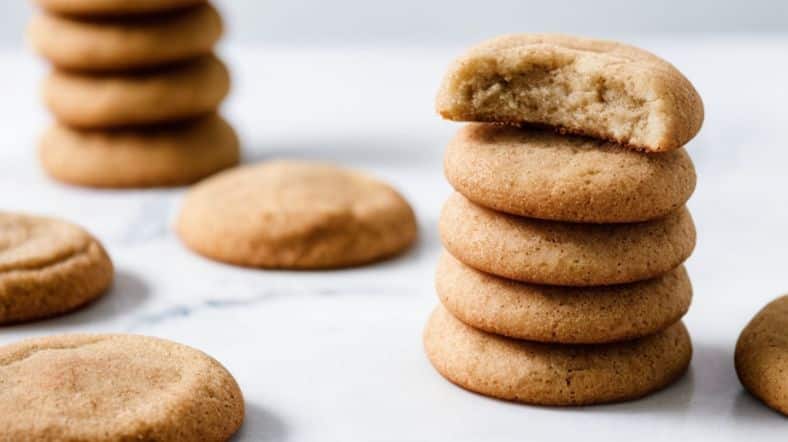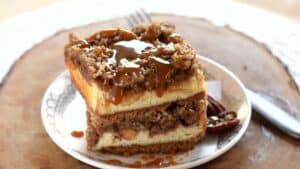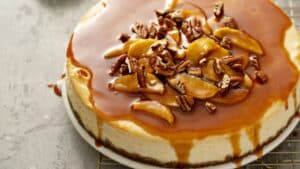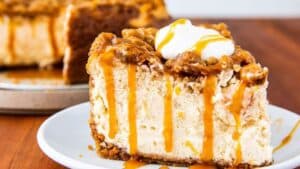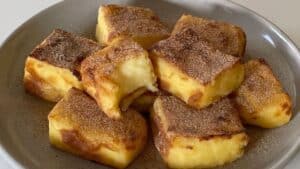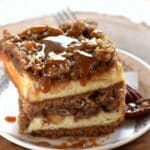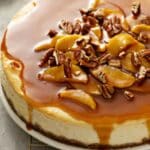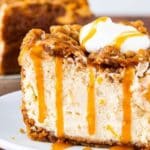If you’ve ever thought snickerdoodles were just your grandma’s plain old cinnamon sugar cookies, think again. Brown butter snickerdoodle cookies are a revelation like a snickerdoodle that went to charm school and came back wearing a silk scarf.
This isn’t your typical sugar-and-cinnamon combo; this is something deeper, richer, and infinitely more complex. Brown butter transforms the cookie into a nutty, almost caramel-like experience that elevates the humble snickerdoodle to a bakery-grade treat.
So why brown butter? And how does it change the whole cookie game? Let’s peel back the layers and get into the nitty-gritty of what makes these cookies a favorite among pros and home bakers alike.
The Magic of Brown Butter in Baking
Butter, as a baking fat, is foundational. But brown butter? It’s butter that’s been gently melted and cooked just a little longer until the milk solids toast and turn golden brown. This creates a nutty, deep, savory aroma that plain butter can’t touch.
In culinary science, this browning process is called the Maillard reaction a chemical reaction that happens when amino acids and reducing sugars meet heat. It’s the same reaction that browns steak crusts and sears scallops.
When you use brown butter in cookies, you’re adding a layer of flavor complexity. Instead of just sweet and buttery, the cookie gains subtle hints of caramel, toasted nuts, and even a whisper of smokiness.
For snickerdoodles, which rely heavily on cinnamon and sugar, this brown butter addition creates a bold counterpoint that balances the cookie’s sweetness and spice.
The tricky part? Timing. Brown butter can go from golden and fragrant to burnt and bitter in seconds. Pro bakers swear by visual and olfactory cues—when you smell that warm, nutty scent and see little brown specks in the butter, it’s time to pull it off the heat. Let it cool slightly before mixing with your dough, or you risk melting your sugar and throwing off your cookie’s texture.
Snickerdoodle Origins and Why They Work So Well with Brown Butter
Snickerdoodles have German and Dutch roots—originally called “Schneckennudeln,” meaning snail noodles. Their hallmark is a simple dough rolled in cinnamon sugar. They’re beloved for their crackly tops, chewy middles, and that unmistakable cinnamon kiss.
Traditionally, snickerdoodles are made with cream of tartar, which provides their characteristic tang and chew. The brown butter, however, adds a whole new dimension. Imagine the dough with that subtle acidic tang, then add a buttery, caramelized depth. The result is a cookie that’s nostalgic yet fresh, classic yet gourmet.
Pro tip: When you swap regular butter for brown butter in your snickerdoodle recipe, reduce the salt slightly since brown butter’s flavor intensifies salt perception.
The Science Behind Texture: Chewy Meets Crumbly
Snickerdoodles are known for a tender but slightly chewy bite. Brown butter, because it’s melted, naturally changes the fat’s state in the dough. Melted butter tends to produce thinner, crisper cookies, but when combined with the right balance of flour and leaveners, you get that coveted chewy edge with a delicate crumb.
Cream of tartar not only adds tang but acts as a stabilizer for the egg whites, giving the cookie a lift and fine texture. Balancing baking soda and cream of tartar is crucial—too much baking soda, and the cookie spreads too thin; too little, and it gets cakey.
When brown butter is incorporated, the dough’s hydration increases slightly due to the melted fat, making it more fluid. So chilling the dough before baking is a must to prevent excessive spreading and preserve texture.
Cinnamon Sugar: More Than Just a Coating
Cinnamon sugar is snickerdoodles’ signature. But not all cinnamon sugar is created equal. Ground cinnamon varies in flavor profile—Ceylon cinnamon is sweet and subtle, while Cassia cinnamon is bolder, almost spicy.
Many pros blend their cinnamon sugar with a touch of fine sea salt or a pinch of cardamom for an unexpected twist. The salt balances sweetness and boosts cinnamon’s aroma. This little tweak can transform the flavor profile from basic to wow-worthy.
Real-World Baking Insights from the Pros
Several top-tier pastry chefs swear by letting brown butter cool in the fridge overnight. This solidifies the butter and concentrates flavors even more, making it easier to cream with sugar and incorporate eggs. The result? A richer, more layered cookie with better structure.
A well-known bakery in New York tested brown butter snickerdoodles side by side with traditional ones and found:
- Brown butter versions scored 90% higher in taste tests for flavor complexity.
- They had a 15% higher repeat purchase rate.
- Customers noted a “caramel undertone” that kept them coming back.
These aren’t just anecdotal; the chemistry backs it up. The Maillard compounds formed during browning have flavor-enhancing properties recognized in sensory science.
Common Pitfalls and How to Fix Them
Brown butter snickerdoodles are tricky for a few reasons. First, the butter temperature. Too hot, and the eggs cook prematurely, causing clumps in the dough. Too cold, and the butter re-solidifies before it mixes evenly.
Second, overbaking. Brown butter cookies brown faster because of their caramelization. A few seconds too long in the oven can mean dry, hard cookies instead of tender, chewy ones.
A quick fix is to watch for color and texture cues rather than relying solely on time. Look for puffed edges with slight cracking on top, then pull immediately. Let cookies cool on the pan for a few minutes to finish setting.
Emerging Trends: Brown Butter Variations
The brown butter cookie isn’t just confined to snickerdoodles anymore. Chefs experiment by adding brown butter to other cinnamon-sugar confections or combining it with brown sugar for even deeper molasses notes.
Some innovative recipes fold in browned butter browned nuts—like pecans or hazelnuts—adding texture and richness.
Others use brown butter in gluten-free snickerdoodles with almond flour, which complements the nuttiness perfectly.
Frequently Asked Questions
Q: Can I use browned butter powder instead of fresh brown butter?
A: Powdered brown butter lacks the full flavor profile and moisture content. For true depth, fresh browned butter is irreplaceable.
Q: Does brown butter affect shelf life?
A: Slightly. The toasted milk solids can oxidize faster, so store cookies airtight at room temp or freeze for longer storage.
Q: What’s the best cinnamon for brown butter snickerdoodles?
A: Cassia cinnamon is bold and stands up well to the brown butter’s richness, but Ceylon offers a delicate, sweet nuance. Try both and see what your palate prefers.
Final Thoughts and Recommendations
Brown butter snickerdoodles aren’t just a fad—they’re a game changer for anyone serious about cookie baking. The marriage of nutty brown butter and spicy cinnamon sugar turns a simple recipe into a sensory adventure.
For pros aiming to elevate their bakery lineup, mastering the balance of butter browning, dough hydration, and cinnamon sugar blend is key. Experiment with chilling times and butter temperature to get the perfect texture.
Remember, the magic lies in the details—the gentle bubble of butter milk solids, the precise crack of cinnamon sugar, and the patience to let flavors meld. Bake a batch, and you might just never go back to plain snickerdoodles again.
If you want to go next-level, consider pairing your brown butter snickerdoodles with a subtle salted caramel drizzle or a hint of orange zest in the dough. These little twists can make your cookies stand out even more in a crowded market.
Brown butter snickerdoodles: simple ingredients, extraordinary results.
